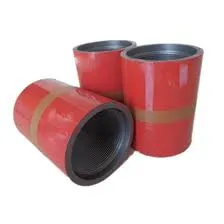- Afrikaans
- Albanian
- Amharic
- Arabic
- Armenian
- Azerbaijani
- Basque
- Belarusian
- Bengali
- Bosnian
- Bulgarian
- Catalan
- Cebuano
- Corsican
- Croatian
- Czech
- Danish
- Dutch
- English
- Esperanto
- Estonian
- Finnish
- French
- Frisian
- Galician
- Georgian
- German
- Greek
- Gujarati
- Haitian Creole
- hausa
- hawaiian
- Hebrew
- Hindi
- Miao
- Hungarian
- Icelandic
- igbo
- Indonesian
- irish
- Italian
- Japanese
- Javanese
- Kannada
- kazakh
- Khmer
- Rwandese
- Korean
- Kurdish
- Kyrgyz
- Lao
- Latin
- Latvian
- Lithuanian
- Luxembourgish
- Macedonian
- Malgashi
- Malay
- Malayalam
- Maltese
- Maori
- Marathi
- Mongolian
- Myanmar
- Nepali
- Norwegian
- Norwegian
- Occitan
- Pashto
- Persian
- Polish
- Portuguese
- Punjabi
- Romanian
- Russian
- Samoan
- Scottish Gaelic
- Serbian
- Sesotho
- Shona
- Sindhi
- Sinhala
- Slovak
- Slovenian
- Somali
- Spanish
- Sundanese
- Swahili
- Swedish
- Tagalog
- Tajik
- Tamil
- Tatar
- Telugu
- Thai
- Turkish
- Turkmen
- Ukrainian
- Urdu
- Uighur
- Uzbek
- Vietnamese
- Welsh
- Bantu
- Yiddish
- Yoruba
- Zulu
Understanding the Distinction Between Casing and Tubing in Oil and Gas Production
Understanding the Difference Between Casing and Tubing in Oil and Gas Operations
In the oil and gas industry, the terms casing and tubing refer to two essential types of pipes that play critical roles in the drilling and production processes
. While they may seem similar at first glance, they serve distinct purposes and are constructed differently.Casing is a large-diameter pipe that is installed in the wellbore during the drilling process. Its primary purpose is to stabilize the well and isolate various underground formations to prevent fluid migration. Casing is typically made from steel and is essential for protecting the integrity of the well. It is installed in sections, known as casing strings, and is cemented in place to secure it against the rock formation. The casing keeps out water and other unwanted substances, ensuring that the well remains productive and operates safely.
what is the difference between casing and tubing?

There are different types of casing, categorized by their placement in the well. For instance, surface casing is the first string installed to protect shallow groundwater and any upper formations. Intermediate casing is used to provide additional support and isolation for deeper formations. Finally, production casing is installed just above the area that will be producing hydrocarbons.
On the other hand, tubing is a smaller-diameter pipe that is installed inside the casing after the well has been drilled and cased. Its main function is to transport the oil or gas from the reservoir to the surface. Tubing is also typically made from steel, but it is designed to withstand differing pressures and temperatures encountered during production. Unlike casing, tubing does not remain cemented in place; it can be pulled out for maintenance or replaced as needed.
In summary, while both casing and tubing are critical for successful oil and gas extraction, they serve different purposes. Casing provides structural support and protects the well from environmental factors, while tubing facilitates the flow of hydrocarbons from the reservoir to the surface. Understanding these differences is crucial for anyone involved in drilling or production operations, as the choice and management of these components can significantly impact the efficiency and safety of the entire process.
-
Tubing Pup Joints: Essential Components for Oil and Gas OperationsNewsJul.10,2025
-
Pup Joints: Essential Components for Reliable Drilling OperationsNewsJul.10,2025
-
Pipe Couplings: Connecting Your World EfficientlyNewsJul.10,2025
-
Mastering Oilfield Operations with Quality Tubing and CasingNewsJul.10,2025
-
High-Quality Casing Couplings for Every NeedNewsJul.10,2025
-
Boost Your Drilling Efficiency with Premium Crossover Tools & Seating NipplesNewsJul.10,2025







